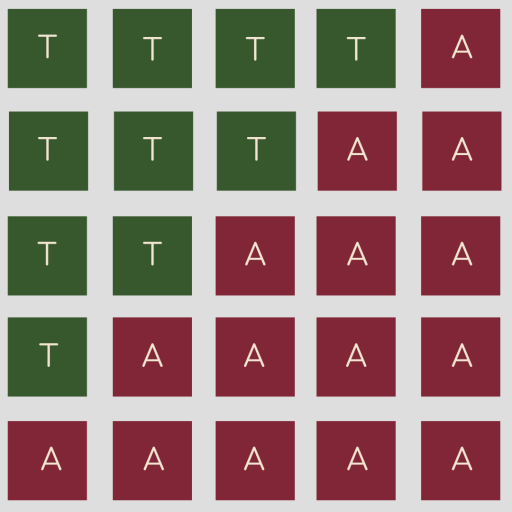Three simple writing techniques to create relationship

One of the great worries of every entrepreneur grappling with communication for his business is how to make his texts more engaging. A more than fair concern since our aim is always to create a relationship with our audience, so here are 3 writing techniques you can start with right away because they are simple simple.
Premise
People are online to mind their own business, especially on social media.
Sometimes it happens that they look for specific contents on the net and then 2 fundamental technical elements come into play:
- SEO (search engine optimization) which makes your content found organically (= unpaid) and which is very important on your site, on Pinterest and on YouTube
- the hashtags that do the same thing on instagram.
In all other cases, people come across our content while they are doing something else, and this is true even if they follow us on social media because it's not that they open Instagram saying "Now let's see what new Tizio Caio Sempronio is proposing to me".
They're just sitting there messing around on their feed and stumbling upon your content. Or your newsletter or the announcement of your new blogpost arrives in the email (clogged with other eight thousand and seventeen things).
Will they read? Will they open the email? Will they click on the link? This depends on how quickly you can get them out of what I elegantly call “their-fuck trance” into listening to you.
Why am I talking about trance? Because each of us experiences hypnotic states every day which are nothing but altered states of consciousness (no, it doesn't count when you would strangle the neighbor who mows the lawn at 6 on a Sunday morning).
You know when you're so focused that you can't hear what the person next to you is saying? Well, that's a trance state. Obviously there are more or less deep ones but the gist does not change: we live more than one a day and if someone doesn't say something really cool, we don't get out of it.
This is why I often speak of hypnotic writing, because it must involve the public enough to:
- get his attention
- make him stay focused on your message.
Now let's see 3 easy writing techniques that allow you to achieve this effect.
The truisms
This is a neuro-linguistic programming technique that has two versions: the pure one and the simplified one.
In order not to go into cumbersome explanations, I propose the simplified one applied to writing for business.
Look at this pattern

T = truism
A= statement
Truisms are true things, which those who read to you (or those who listen to you) know are true, even better if they are part of their present or past experience.
Affirmations are, on the other hand, the things you want to explain, what you want to convey to him.
By following this pattern, you establish a relationship of trust with the reader because you first start from his experience and only gradually get to convey your message ever stronger.
In essence, this model summarizes the concept "Before proposing something (even just an idea) you have to earn the customers' trust and make them understand that you empathize with them, that you know them inside out".
LET'S GIVE AN EXAMPLE:
Let's say you want to convince a friend of yours to go on vacation to Indonesia.
Most people would start right away by firing off a question like:
“Would you like to come to Indonesia?”
But saying so, your friend would perhaps be a little surprised and it's easy for him to say no .
You wouldn't be as persuasive as you might be.
The repeated truism technique could greatly increase the likelihood of it saying yes as long as you use it elegantly, like this, for example:
“ It would be nice to find some time to go on holiday this winter”
(it is very probable that the friend will answer with a first " yes "),
“Maybe in a beautiful place, where it's warm, but also a cool, blue and crystal clear sea”
(Also in this case he will probably answer with a nice "yes" )
“A place where life costs very little, a place in the middle of greenery and the most beautiful sea, which offers both culture and total relaxation and which perhaps offers us the opportunity to see wonderful animals and fish and experience unique emotions” .
(Again, it's very likely that the friend is getting turned on just thinking about it and keeps saying " yeah gee...maybe")
“ And maybe let's also say that you can taste local specialties of fresh, freshly caught, good, tasty meat and fish and very fresh, sweet and colorful fruit that you can pick directly from the trees on the beach... it would be wonderful, right?
(Your friend will probably be overjoyed because you've gradually guided and nudged him toward consensus…he can't help but say, “ yeah, man, that would be cool! ”)
At this point make your proposal :
“My dear, a wonderful place like this really exists!! It's called “INDONESIA” and we absolutely have to find a way to go and enjoy it!“
The nested loops
This technique too can be used in an incredibly articulated or much more schematic way.
Richard Bandler, one of the fathers of Neuro Linguistic Programming, is famous for running it over 3 days starting it on day 1 and closing it at the end of day 3.
Here, without being so ambitious, we can use this technique in our texts with good success.
But what is it about? It's about opening parentheses as if it were a mathematical formula:
(X * (Y / (Z + Q))) = W
Scared huh?
Now let me explain: while you write you start telling a story or ask a question, BUT YOU DON'T CLOSE THE DISCOURSE! Because while you're telling, you open a second story (or ask another question) and you don't even close this one, but, again, you open a parenthesis. Here I advise you to stop and close the third story or answer the third question, then move on to the second and finally to the first.
It is a fascinating technique for explaining even complex concepts with progressive examples that increasingly simplify the discussion or that lead the reader more and more to the heart of the problem.
Basically it is a narrative application of the famous technique of the 5 whys of quality.
Do you want an example of this technique in the world of literature? Mary Shelley's Frankestein * where the story opens with the story of Robert Walton's journey through the ice, which is interrupted at a certain point because he meets Frankestein who begins to tell his story, which then interrupts for a long parenthesis during the which the Creature narrates what happened to it once it left its creator's study.
Only once this story is closed does it resume Frankestein's and once his is closed can Mr. Walton's also be concluded.
A perfect example of a nested loop!
Using this technique, the reader will remain glued to your words and will be so emotionally involved that they will be much more inclined to ask you questions or comment.
cinematic technique
You know when in a film a scene opens on a small detail shown in the smallest details and then widens the field to include all the surrounding space?
Or, vice versa, when everything starts from very far away and then "dives" into the detail that interests the narrative?
Here, you too can do the same by starting to present a small detail and then moving on to a broader and more general discussion, or starting from the maximum systems to then immerse yourself in the specific reality of your client.
This type of approach is very intriguing and allows your audience to understand that you have in-depth knowledge of your sector and that you can really help them. In turn this will stimulate questions, comments and discussion.
Which of these techniques do you prefer and which one will you start using right away?
When you subscribe to the blog, we will send you an e-mail when there are new updates on the site so you wouldn't miss them.
By accepting you will be accessing a service provided by a third-party external to https://www.insightadv.it/


































































Comments